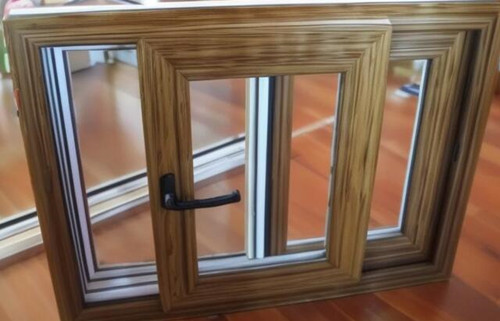The differences between thermal break aluminum windows and non-thermal break aluminum windows are as follows.
1. Material Differences
Thermal break aluminum windows are primarily made of aluminum alloy, which can effectively prevent oxidation and corrosion while providing strong wind pressure resistance, allowing for the installation of large-area glass. In contrast, non-thermal break aluminum windows use single-layer aluminum alloy material, which has lower strength and cannot accommodate large glass installations.

2. Sound Insulation Performance
Thermal break aluminum windows feature a hollow design with insulating and soundproof materials filling the thermal break, providing good sound insulation. This is particularly effective in reducing noise disturbances in urban living environments where noise pollution is prevalent. Non-thermal break aluminum windows, on the other hand, have relatively poor sound insulation performance and low noise isolation capability.

3. Thermal Insulation Performance
Thermal break aluminum windows employ a thermal break design that prevents direct heat transfer between the indoor and outdoor environments, effectively providing thermal insulation and energy-saving benefits. Non-thermal break aluminum windows do not achieve good insulation, leading to easier heat exchange between indoor and outdoor temperatures.
4. Safety
Thermal break aluminum windows incorporate advanced protective systems and multi-point locking mechanisms, significantly enhancing the security level of the windows. In contrast, the security of non-thermal break aluminum windows is relatively lower, making them more susceptible to being compromised, which can affect home safety.

5. Cost Differences
Thermal break aluminum windows have more complex and advanced processing techniques and material selections, resulting in higher prices compared to non-thermal break aluminum windows. Non-thermal break aluminum windows are relatively simpler and more economical, making them suitable for families with budget constraints.

In summary, the differences between thermal break aluminum windows and non-thermal break aluminum windows primarily lie in material, sound insulation, thermal insulation, safety, and cost. Thermal break aluminum windows are more durable, provide better wind resistance, enhanced sound and thermal insulation, and higher safety, but are also more expensive. Non-thermal break aluminum windows, in contrast, are simpler and more economical, making them suitable for families with cost considerations. Therefore, when choosing the appropriate window type for home decoration, one should consider these five factors comprehensively and make a selection based on personal needs and budget to ensure that the home meets individual requirements while maintaining good performance and quality.



